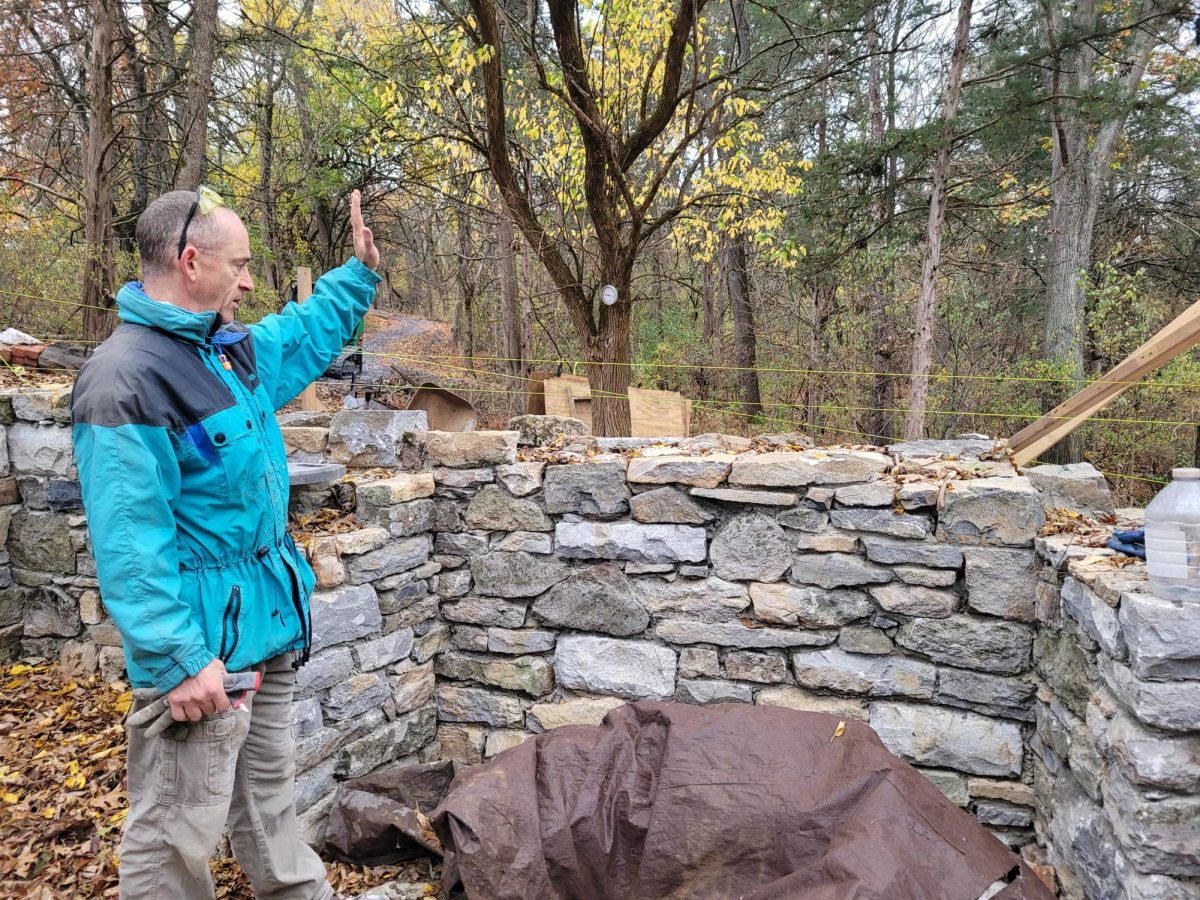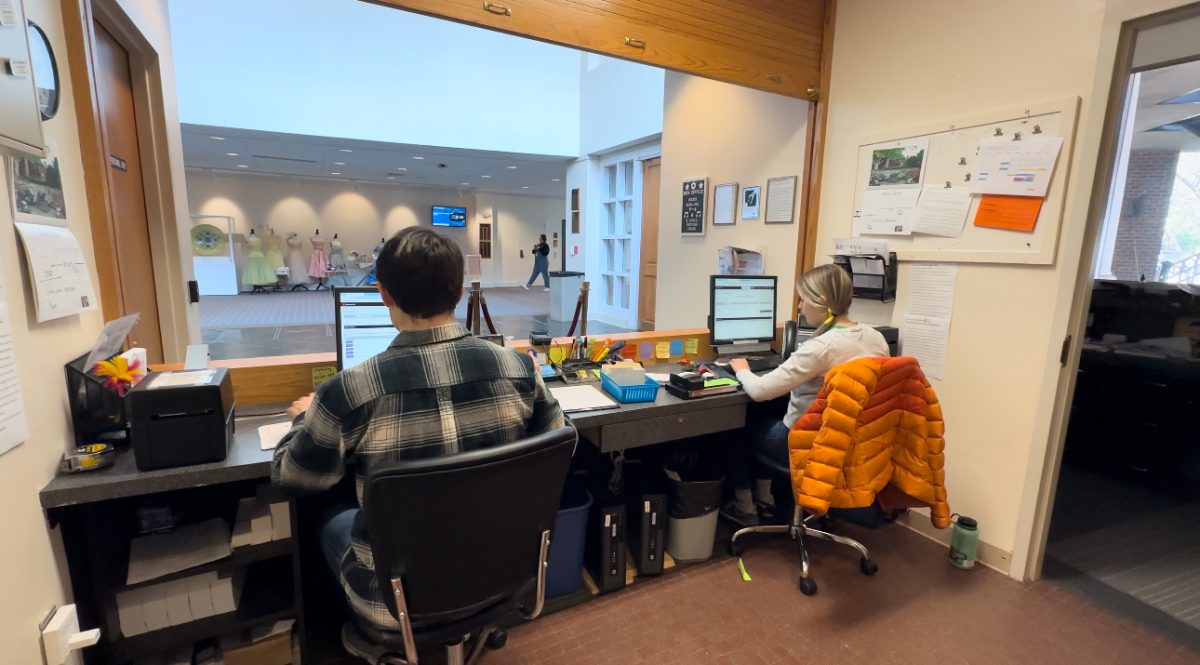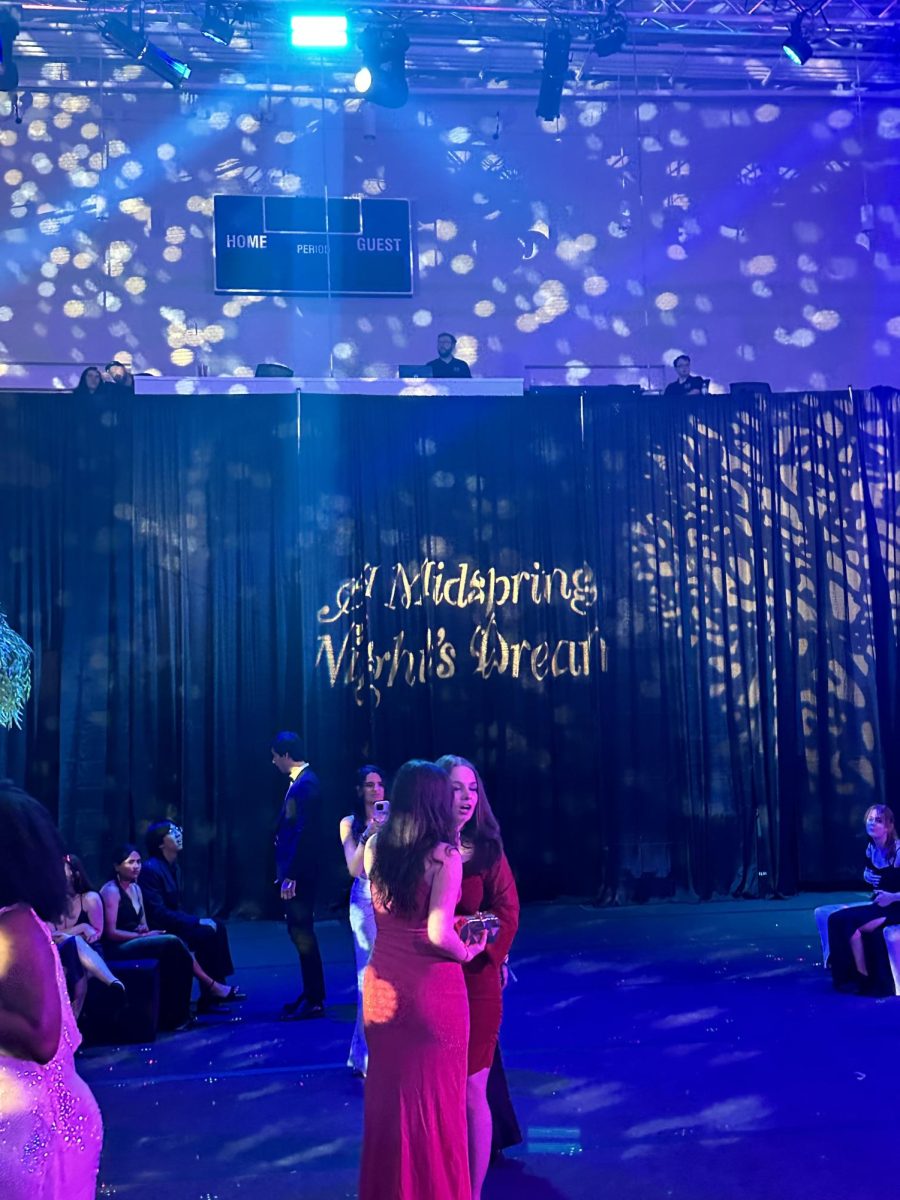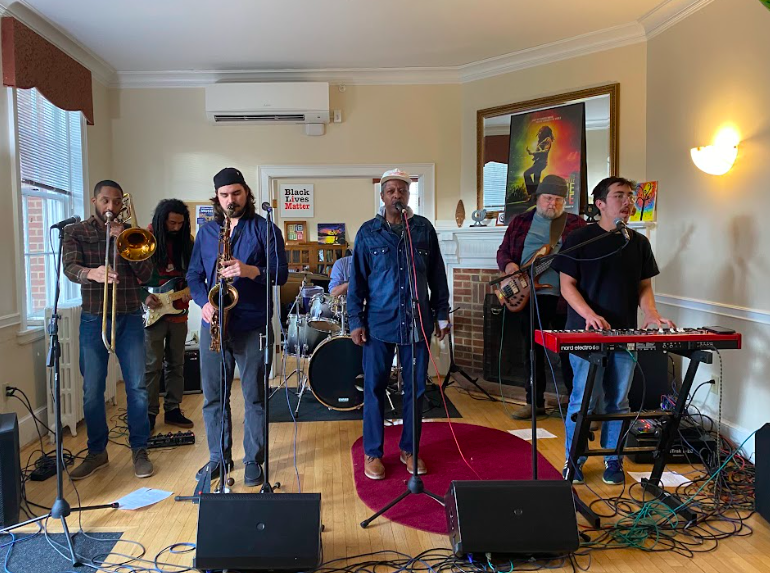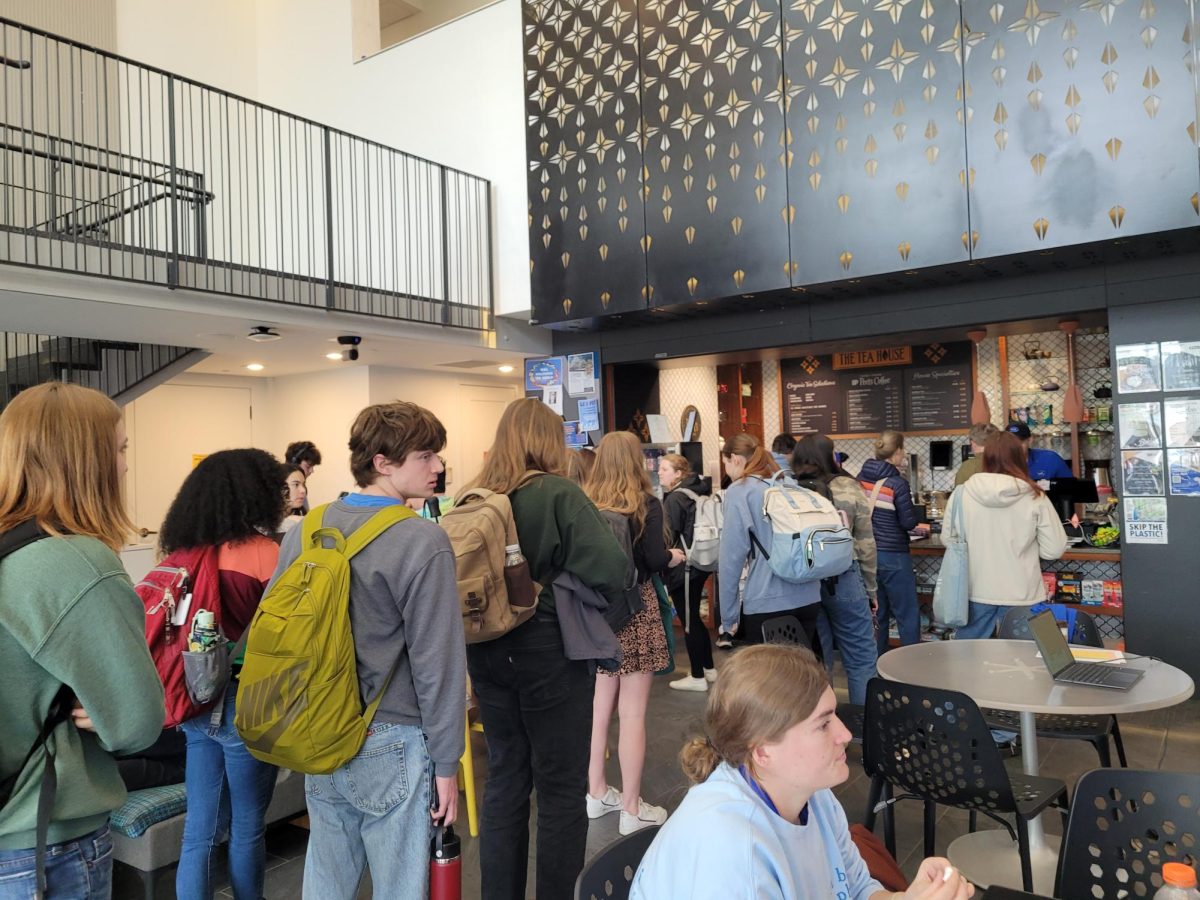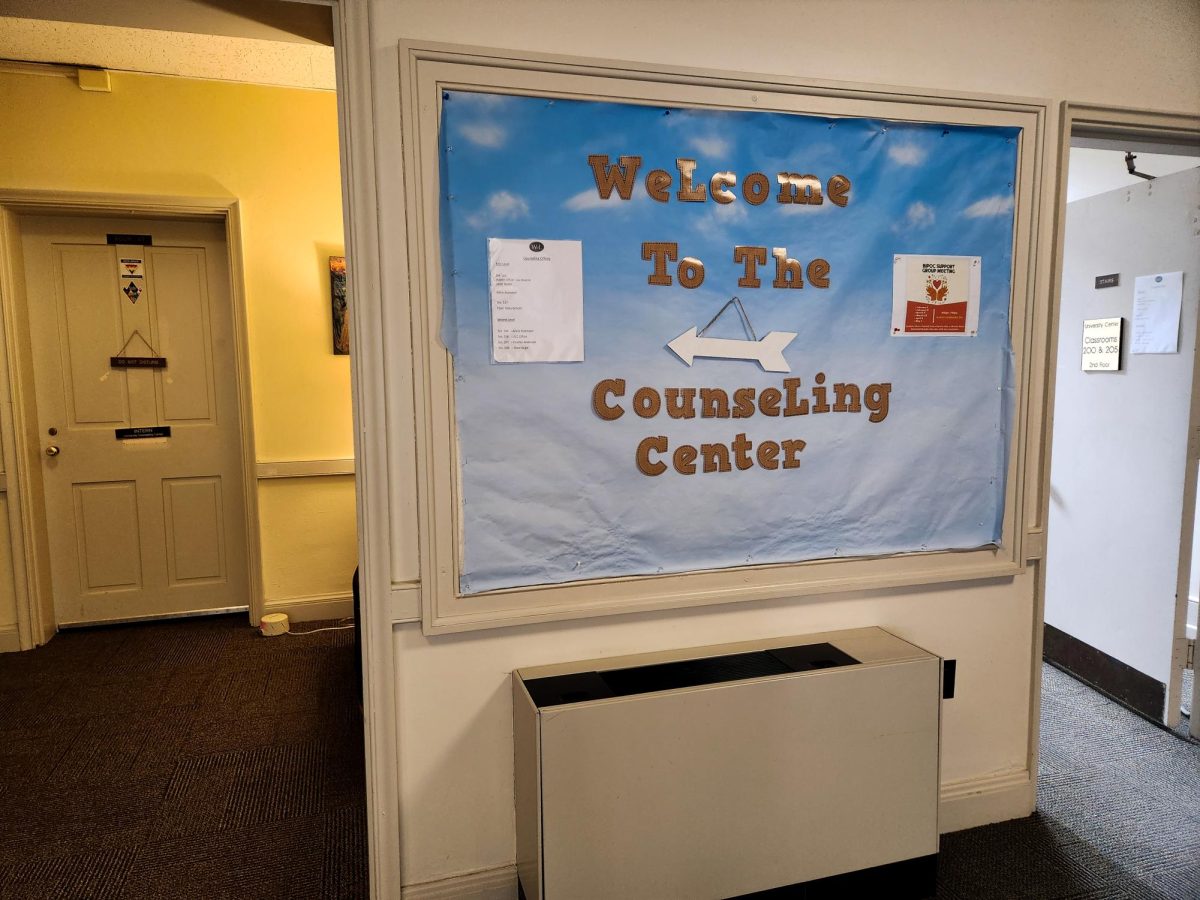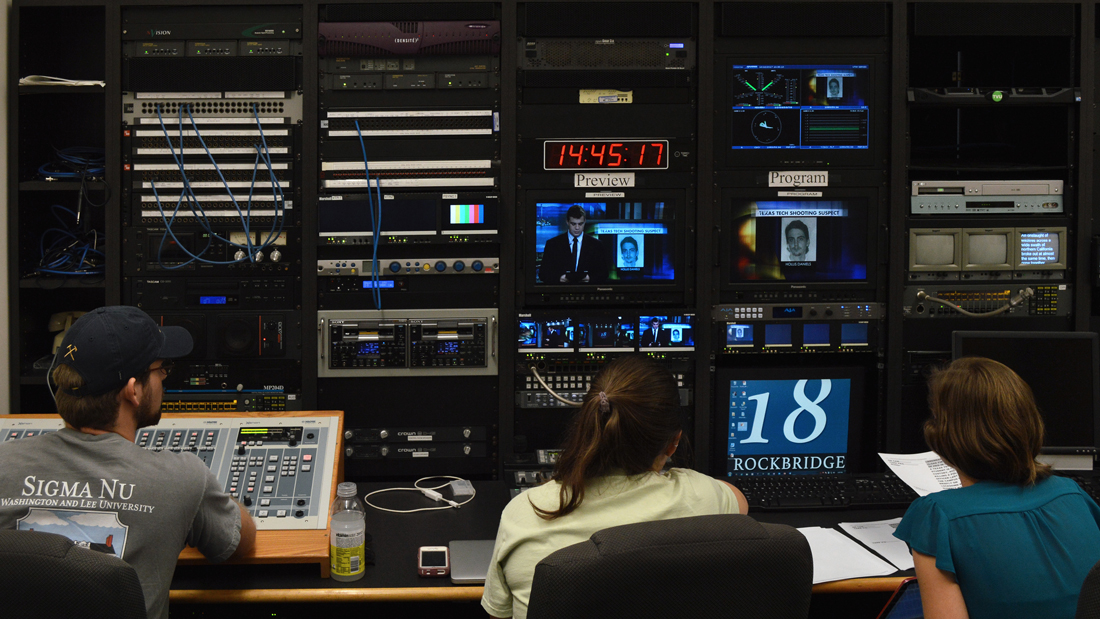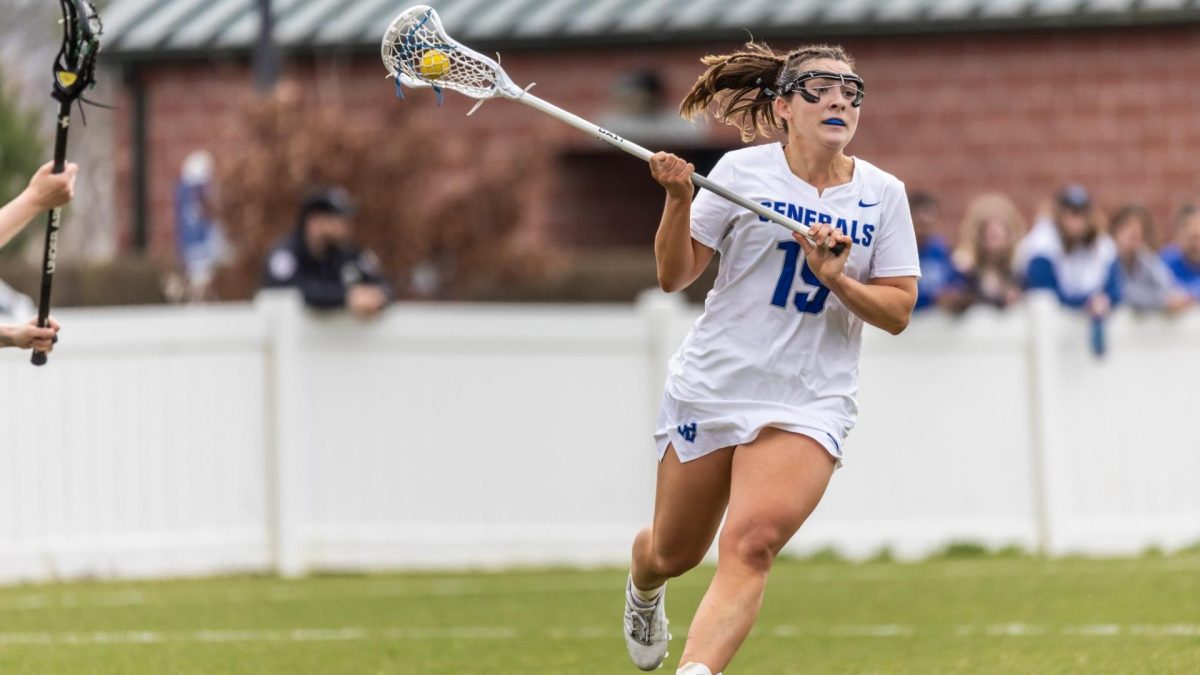Structure Nine — once a dining hall that served the students of Liberty Hall Academy and later a hub for life and learning among enslaved plantation workers — is being restored as an outdoor classroom and community space.
Professor Donald Gaylord, research archaeologist and instructor of anthropology at Washington and Lee University, said complicated histories like these are the ones in most desperate need of preservation.
“This structure will be a place of contemplation, a place to think about that history that is, in fact, challenging,” he said. “These stories, if they aren’t told and retold through a variety of venues, can become hidden.”
Professors and students in the archaeology department are working with John and Jesse Friedrichs, a father and son team that own New Dimension Masonry, to rebuild and preserve Structure Nine this school year. The building, named for being the ninth structure researchers discovered on the former Liberty Hall Academy campus, sits in the valley behind the West Denny parking lot.
The more than $100,000 project will be finished by April, Gaylord said, to celebrate the archaeology department’s 50th anniversary.
When the restoration process began in September, Structure Nine was just “a pile of rock and dirt,” Jesse Friedrichs said. Since then, he and his father have been restoring the building using 18th-century construction practices and materials. They specialize in this kind of preservation, and have led projects elsewhere on campus as well as at historic sites across Virginia.
John Friedrichs said connecting with history through his job is always fascinating, but this site has been especially moving because of its complicated history of slavery.
“It really struck home when I stood here. Think of how many possibly bare, enslaved feet have stood right here,” he said.

From 1803 to 1844, Andrew Alexander owned the section of land that is now home to apartments, townhouses and athletic fields on back campus. A former representative in the House of Delegates, Alexander returned to Lexington as county surveyor. He also owned 25 enslaved people who grew wheat, rye and barley and raised cattle and sheep for his profit.
Gaylord said, based on archeological evidence, Structure Nine was likely a blacksmith shop and forge while Alexander owned the property. After conducting research in historical archives, Gaylord learned that an enslaved blacksmith named John Anderson taught children to read and write on the plantation and likely ran a schoolhouse out of Structure Nine.
“We think of Washington and Lee as having an academic purpose. But it was not just about ancient languages and literature being taught to W&L students. It was about this place too, where a number of enslaved black folks were able to become educated,” he said.
Students are helping Gaylord and other archaeology professors uncover and preserve the stories of Structure Nine, mainly by washing and sorting artifacts found on the site.
Ryan Bascom, ’27, said the work is important because it ensures the lessons drawn from the era of enslavement can be learned for generations.
“We’re preserving those artifacts so that we can better remember that history, so that it can be studied in the future more effectively and respectfully,” he said.
The Structure Nine project also serves as a more concrete connection to past events that may be hard for students to understand, Sam Bennett, ’26, said.
“I think it’s going to be a positive thing for the campus,” he said. “I think most students know that there’s a complicated history with enslaved people on this campus, but this project gets everyone involved in the vast lifetime of this structure.”
Before Alexander owned the land, it was the site of the 20-acre campus of Liberty Hall Academy, one iteration of what is now Washington and Lee University. The campus was active from 1782 to 1803, until campus buildings were moved closer to downtown Lexington.
Structure Nine was built in 1793 and served as a steward’s house, which included a kitchen, a dining hall and residential areas for the steward and his family to live. Gaylord said archives show that the building included a state-of-the art kitchen that normally prepared bread and coffee for breakfast and meat stew for a midday meal.
When John McDaniel, emeritus professor at Washington and Lee, founded the archaeology department in 1974, he began excavating and researching the Liberty Hall Academy campus. He worked extensively on the Liberty Hall Ruins that are a focal point of back campus today. He also identified and documented the foundations of other structures that weren’t visible above ground, Gaylord said.
Archaeology professors revisited McDaniel’s research in 2014. That year, all eyes were on back campus as new apartments, townhouses and parking lots were being built to meet growing student demand.

Since then, the department’s mission has been to preserve the history of buildings like Structure Nine so future students can have direct access to the past.
“Archaeological sites are important because they are multivocal. They speak in many different ways to many different people,” Gaylord said.
The structure, which will serve as an outdoor classroom and community space where students can gather to socialize, learn or simply be immersed in history and nature, is set to be completed this Spring Term.
Until then, the Friedrichs family will be working to stabilize the structure’s original foundation and rebuild its walls.
Because stone masonry is a trade passed down through apprenticeship, Jesse Friedrichs said, the processes used today are essentially the same as those used when the steward’s house was built more than 200 years ago. For example, he uses a “wedges and feathers” technique to split large rocks into smaller pieces rather than reaching for a power drill.
The final product will be a dynamic space everyone can enjoy and learn from, Jesse Friedrichs said.
“It’s going to have a lot of purposes,” he said, “because it’s combining the history of the school as well as the possibility of moving forward.”



